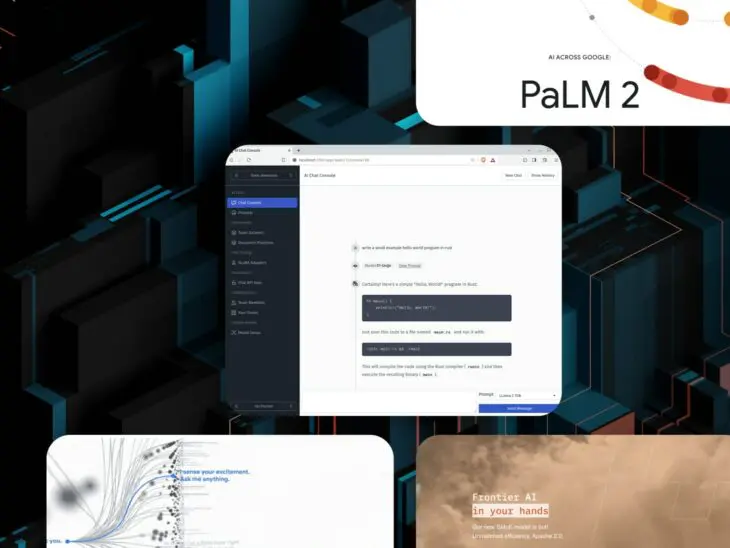In late 2022, ChatGPT burst onto the artificial intelligence (AI) scene, changing that industry for good. And while ChatGPT has gotten a significant amount of attention, the world of AI is vast, diverse, and fast-growing. In particular, open-source AI models present rich opportunity for curious developers and forward-thinking business professionals to explore.
Open-Source
In software development, open-source projects are free for anyone to download, use, modify, and distribute. WordPress is one great example of open-source software, although it’s far from the only one.
Read MoreWhether you’re looking to integrate AI into your projects, enhance your workflows, or simply explore a new and growing area of tech, these models offer a range of features, strengths, and applications that cater to various needs. The algorithms that power language understanding and the creative engines driving generative tasks make open-source AI models part of the pinnacle of community-driven innovation in AI.
Below, we explore nine of the most powerful and exciting open-source AI models available now. Our goal is for you to walk away with not just knowledge about these models but also insights into how they can fit into your personal projects, research endeavors, or business strategies.
What Is An Open-Source AI Model?
Before getting to the AI models themselves, we need to understand what sets open-source AI apart from its counterparts. An open-source AI model is more than just a tool. It’s a philosophy— a collaborative effort toward innovation and shared knowledge in the artificial intelligence space.
Open-source refers to something that can be modified and shared because its design is publicly accessible. In the context of AI, open-source models are developed in a way that allows anyone to access, use, modify, and distribute the source code. This openness fosters a collaborative environment where developers, researchers, and enthusiasts can contribute to and benefit from collective advancements.
Open-source AI models play a pivotal role in advancing the field of AI. They act as catalysts for innovation, allowing a broader range of individuals and organizations to participate in AI development. By democratizing access to cutting-edge technology, open-source AI models ensure that the benefits of AI advancements are shared more widely, leading to equitable and diverse technological progress.
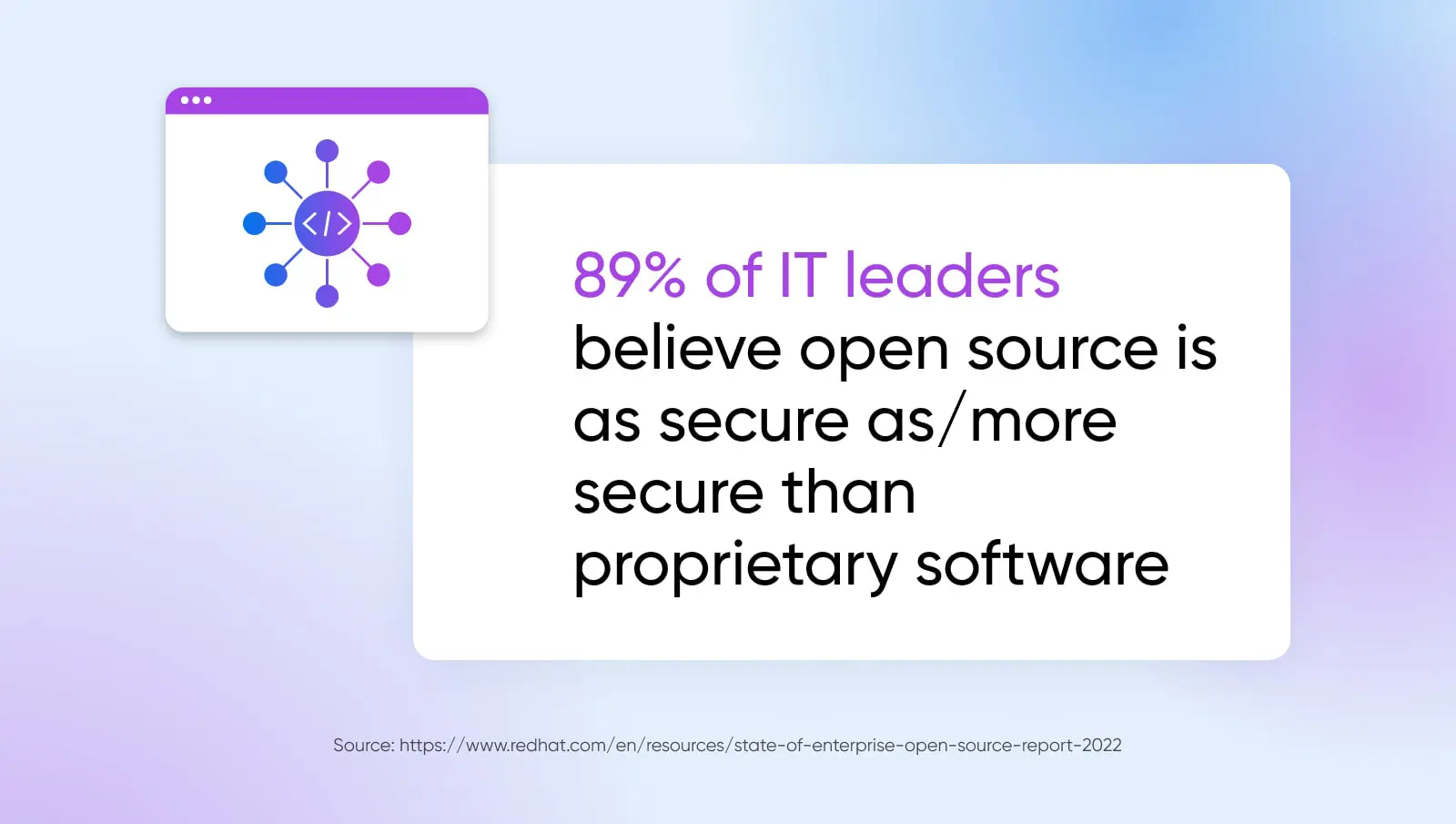
What Are The Benefits Of Using Open-Source AI?
Open-source AI appeals to a wide range of users, from individual hobbyists to large-scale enterprises, because of a few key benefits.
Development Is Transparent
Open-source AI allows users to see precisely how the model is built and operates. This transparency is crucial in an era where understanding the “how” and “why” behind an AI’s decision-making process is as important as the outcomes it produces.
With the entire codebase accessible, it’s easier to ensure that ethical guidelines and responsible AI practices are being followed. This is especially important in applications where AI decisions have significant impacts, such as healthcare or criminal justice.
For businesses and end-users, transparency builds trust. Knowing that an AI model’s processes are open for review and understanding instills confidence in its reliability and fairness.
It’s Easier To Audit
The ability to audit the code makes it easier to identify bugs, biases, or security vulnerabilities. This is a vital step in creating robust, reliable AI systems.
In sectors where regulatory compliance is necessary, being able to audit the AI models ensures that they meet the required standards. This is particularly relevant as governments and industries begin to implement more AI into their processes — and implement regulations around it.
Auditing also allows for ongoing assessment and improvement of the AI model. This process is not just about finding faults but also about evolving the model to adapt to new challenges and requirements.
Community Collaboration
Finally, open-source AI models benefit from the contributions of a global community. The diversity leads to more creative solutions and a broader range of features and capabilities.
With many minds working on the same project, issues can be identified and resolved quickly. The collaborative nature also means that developments and improvements are made at a pace that proprietary models struggle to match.
Participating in open-source projects allows individuals to learn from their peers, share knowledge, and enhance their skills. This aspect of community collaboration is invaluable for personal and professional development in the field of AI.
By leveraging the advantages of transparency and community collaboration, open-source AI models democratize AI technology and push the boundaries of what’s possible in this rapidly evolving field.
Are There Any Downsides Of Open-Source AI?
While open-source AI models offer numerous benefits, it’s important to acknowledge that they are not without their challenges.
There Could Be Biases
Open-source AI models often rely on publicly available data, which can be limited in scope and diversity. This can lead to inherent biases in the model, as it may not accurately represent the broader population or certain demographics–though this isn’t a problem that’s unique to open-source AI. All AI models can be subject to bias based on their training data–and some even actively censor their training data, often with good intentions, but not knowing what biases it will eventually produce.
There’s a lot to be said on the topic of bias within AI that can’t be covered within just a few paragraphs. For now, users should understand that identifying and correcting biases in AI is a complex issue that there isn’t a perfect solution for yet.
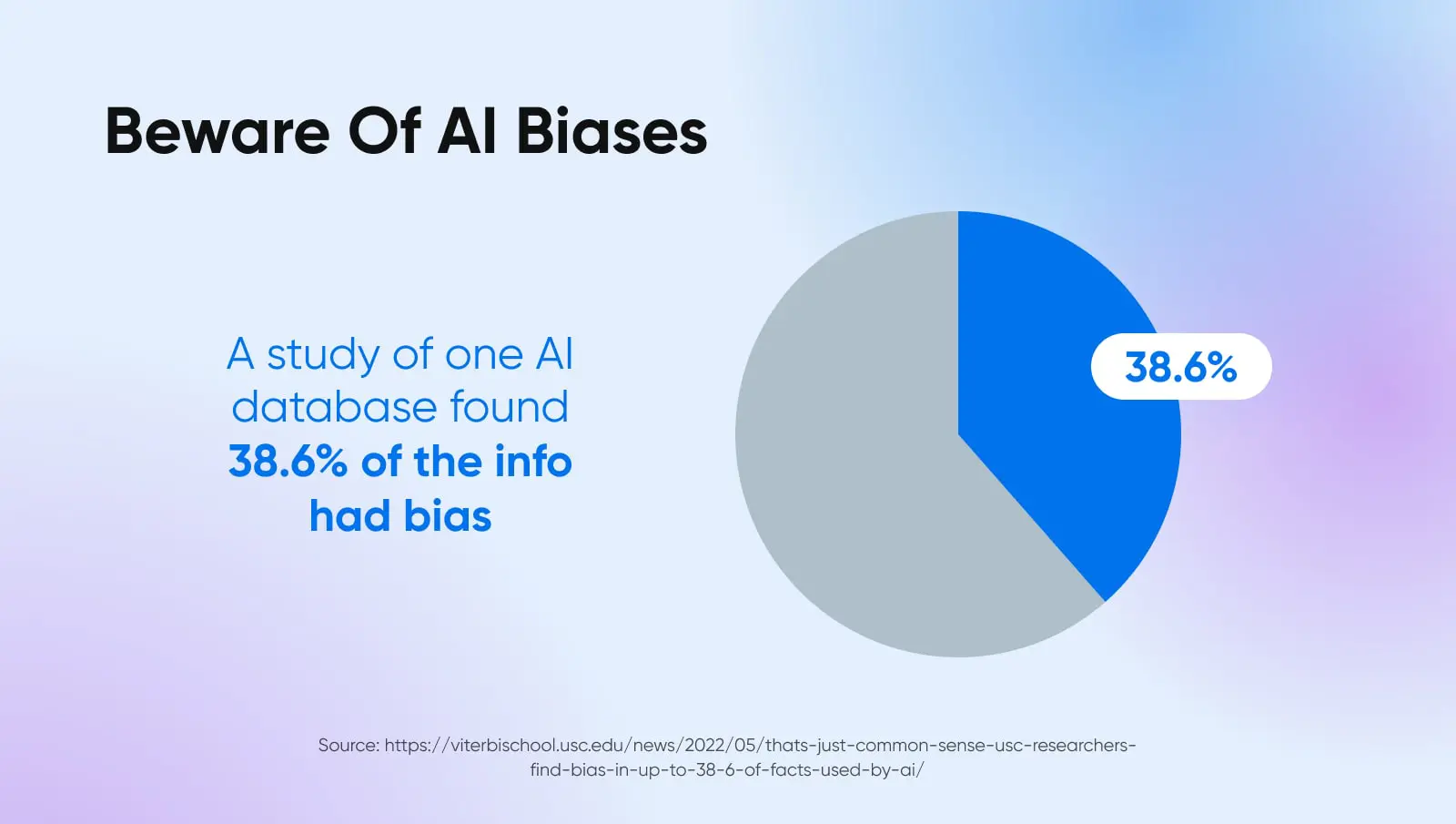
It’s Currently Not As Powerful As Proprietary Models
Open-source projects often operate with fewer resources than their proprietary counterparts. This can limit the extent of research and development, leading to models that may lag behind, in terms of technological advancements. Open-source models also might not always integrate seamlessly with existing systems, and the level of technical support available can vary significantly. This can be a hurdle for businesses or individuals looking for reliable, ready-to-deploy AI solutions.
The Best Open-Source AI Models
Exploring each of these open-source AI models in detail offers insights into their capabilities and potential professional applications. Each of these models brings something unique to the table, offering a glimpse into the future of AI technology. Remember, some offer interaction as a service, and others require a download. Below is a breakdown of each model.
Bionic GPT
Bionic GPT is an advanced open-source language model that excels in natural language understanding and generation. It’s adept at generating coherent and contextually relevant text, understanding complex language patterns, and providing accurate language translations.
Best uses: Ideal for content creation, customer service chatbots, and language translation services.
Professional applications: Businesses can leverage Bionic GPT to create engaging marketing content, develop efficient customer support chatbots, or build language translation tools.
How to get started: Bionic GPT is based on Python. To get started, check out their Introduction and Installation Guide.
GPT-Neo
Developed by EleutherAI, GPT-Neo is a direct response to the need for accessible, large-scale language models. It mirrors the architecture of OpenAI’s GPT-3. GPT-Neo is exceptional at text generation and completing tasks like content creation, summarization, and question-answering.
Best uses: Suitable for automated content generation, data analysis, and educational tools.
Professional applications: GPT-Neo can assist in drafting reports, creating educational content, or analyzing large volumes of text data in research and business environments.
How to get started: GPT-Neo is implemented in Python. To get started, follow the instructions for setup and training setup EleutherAI provides on GitHub.
Mistral AI
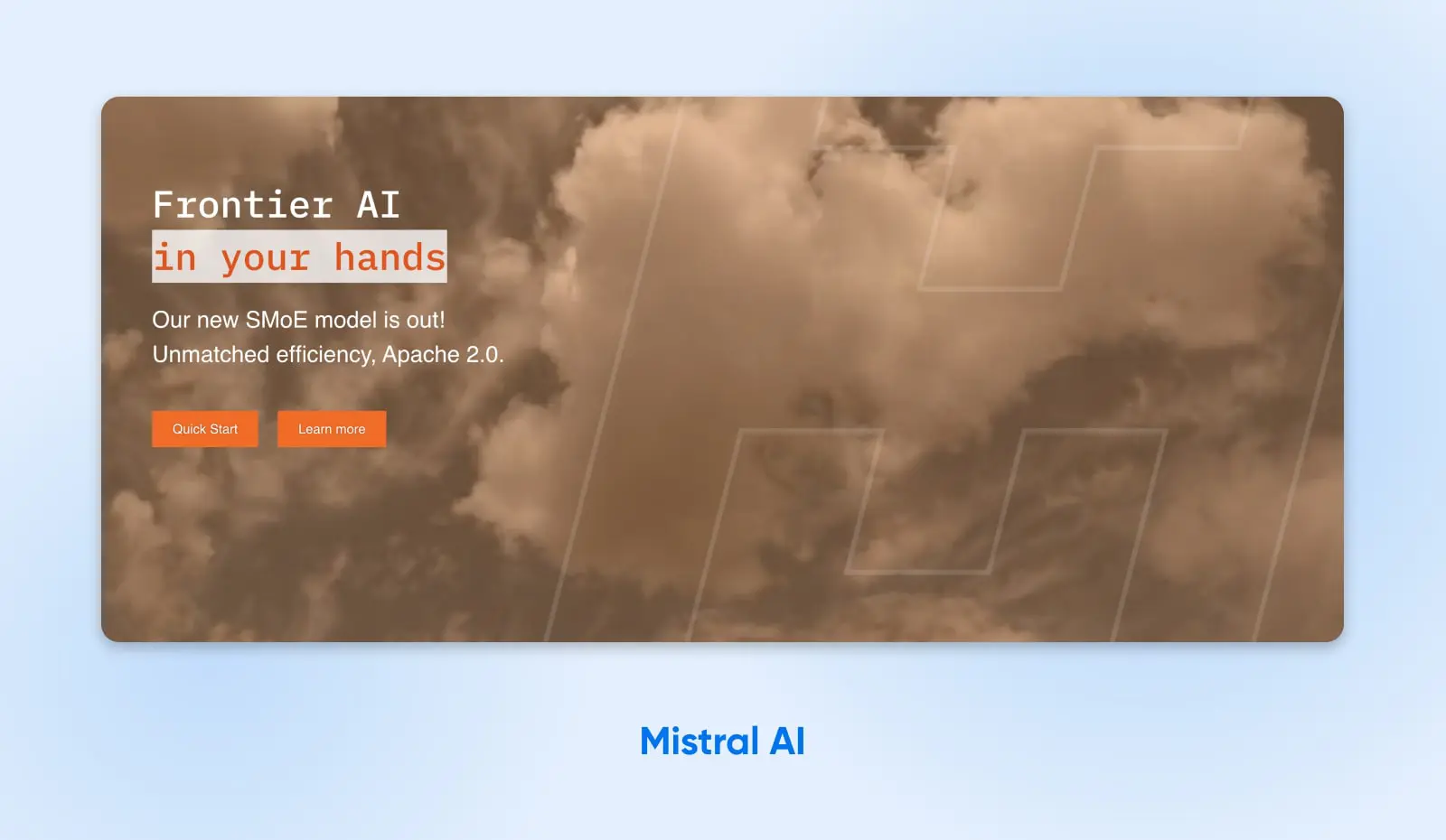
Mistral AI focuses on energy efficiency, aiming to reduce the environmental impact of large AI models without compromising performance. It’s efficient in processing language, understanding context, and generating text with reduced computational resources.
Best uses: Effective for applications where energy efficiency is a priority, like mobile apps or low-resource servers.
Professional applications: Ideal for startups and small businesses looking to implement AI solutions without significant hardware investments.
How to get started: Mistral AI can be implemented in Python. There are multiple ways to access its Large Language Models–learn more about them in the platform’s documentation.
Hugging Face Falcon 180B
A product of the collaborative efforts at Hugging Face, Falcon 180B is a large-scale language model known for its versatility. It’s skilled in various NLP tasks like sentiment analysis, text classification, and language translation.
Best uses: Great for creating intelligent conversational agents, text analysis tools, and multilingual support systems.
Professional applications: Businesses can use Falcon 180B for customer sentiment analysis, automated customer support, and global market research.
How to get started: Hugging Face’s Falcon 180B, like many other models from Hugging Face, is primarily based in Python. To get started with the model, follow the steps outlined here.
LaMDA by Google
Although not fully open-source, LaMDA (Language Model for Dialogue Applications) by Google has made strides in conversational AI with some accessible components. It specializes in generating natural, flowing dialogues and maintaining context over extended conversations.
Best uses: Perfect for creating sophisticated chatbots and virtual assistants.
Professional applications: Companies can deploy LaMDA for advanced customer service bots, interactive virtual assistants, and engaging educational tools.
How to get started: LaMDA is a bit different from the other tools on this list in that it isn’t fully open-source, and it’s not fully publicly available yet. You can experiment with LaMDA in the Google AI Test Kitchen for now. You can also register your interest in Google research opportunities to test future iterations of LaMDA and other AI models and tools.
Large Open-Science Open-Access Multilingual Language Model (BLOOM)
BLOOM stands out for its multilingual capabilities, understanding and generating text in numerous languages. It’s skilled in cross-lingual communication, translation, and global content creation.
Best uses: Ideal for creating tools that require multilingual support or global reach.
Professional applications: Valuable for businesses targeting international markets, offering customer support in multiple languages, or conducting global research.
How to get started: BLOOM is primarily based in Python. It can be used and deployed using Hugging Face’s ecosystem, which requires installing transformers and accelerate. Learn more and follow the steps to get started here.
PaLM 2 by Google
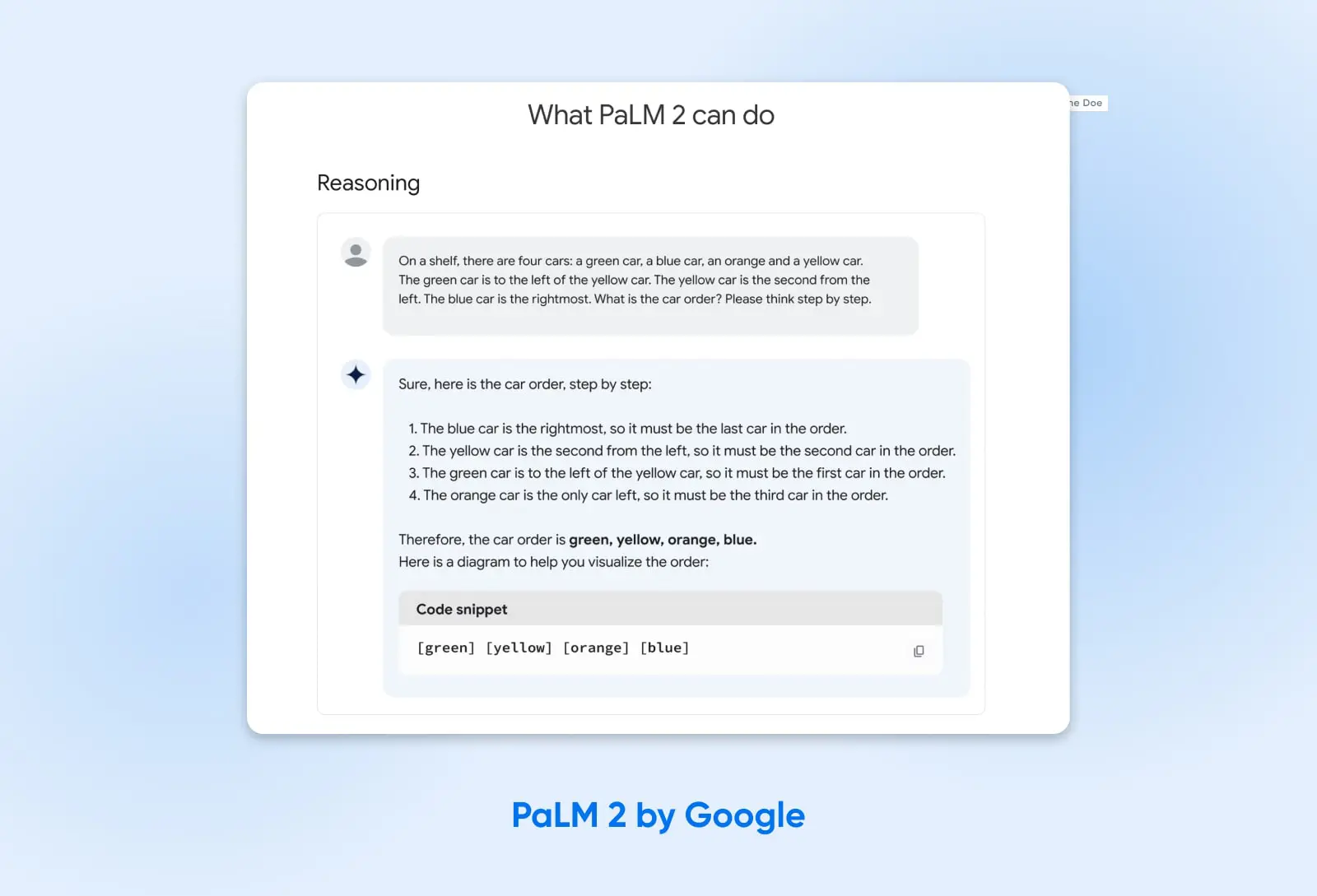
Similar to LaMDA, PaLM 2 by Google is a large-scale model known for its advanced language understanding and problem-solving abilities. It’s effective in complex language tasks, including summarization, translation, and problem-solving.
Best uses: Suited for advanced research, complex data analysis, and sophisticated language processing tasks.
Professional applications: Researchers and businesses can use PaLM 2 for in-depth data analysis, creating complex models, and developing innovative AI-driven solutions.
How to get started: The PaLM family of models includes variations for different developer use cases, like text and chat generation and even text embeddings. It can be implemented in different programming languages depending on your needs. To get started, head to Google’s documentation.
Dolly
Dolly, developed by Databricks, focuses on data analytics and machine learning, handling large datasets efficiently. It’s excellent at data processing, analytics, and machine learning at scale.
Best uses: Ideal for big data analysis, predictive modeling, and data-driven decision-making.
Professional applications: Useful for companies in data-intensive industries like finance, healthcare, and e-commerce for analytics and predictive insights.
How to get started: Dolly is hosted on Hugging Face, where you can download multiple versions and find instructions for how to get started using the model.
Cerebras-GPT
Cerebras-GPT combines powerful software with specialized hardware, designed to enhance the performance of generative models. It specializes in high computational efficiency, handling complex AI tasks rapidly and effectively.
Best uses: Best for applications requiring intensive computational power, like real-time data analysis and complex simulations.
Professional applications: Valuable for research institutions and large enterprises dealing with high-performance computing tasks and real-time data processing.
How to get started: Cerebras-GPT is hosted on Hugging Face, where you’ll find many different versions of the model. Each has quick start instructions, as well as details on its intended use and what’s out of scope.
Open-Source AI FAQs
Is ChatGPT Open-Source?
No, ChatGPT is not open-source. ChatGPT, developed by OpenAI, is based on the GPT (Generative Pretrained Transformer) architecture. While the model itself is not open-source, OpenAI has released smaller versions of their models and some APIs that allow developers to interact with ChatGPT. The source code and full model architecture of ChatGPT are proprietary.
Is GPT Open-Source?
The GPT series (like GPT-3) developed by OpenAI is not open-source. OpenAI has not released the full source code or training datasets of these models. However, they provide API access to developers for integrating GPT’s capabilities into applications and services. There are open-source alternatives inspired by GPT, such as GPT-Neo by EleutherAI, which aim to provide similar functionalities in an open-source format.
Is Google’s AI free?
Some of Google’s AI tools and APIs are available for free or have a free tier, but not all of Google’s AI technologies are open-source or freely available. Google offers several AI and machine learning products, like TensorFlow, that are open-source. However, more advanced and specialized models like LaMDA and PaLM 2 are not fully open-source, and access to them might be restricted or subject to Google’s own terms and conditions.
